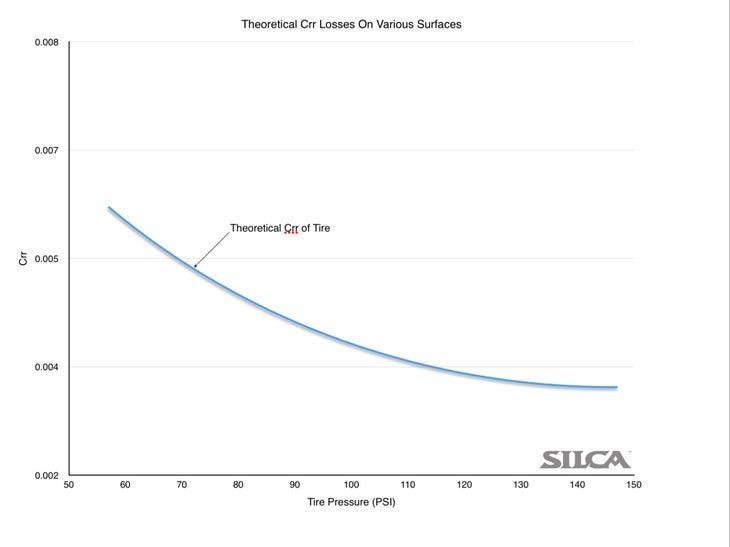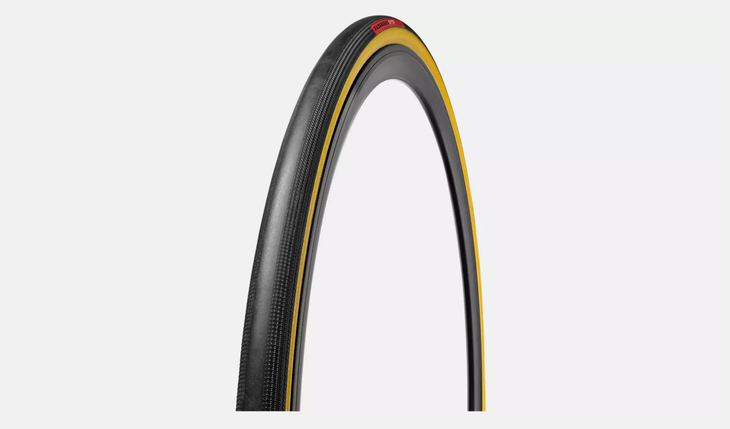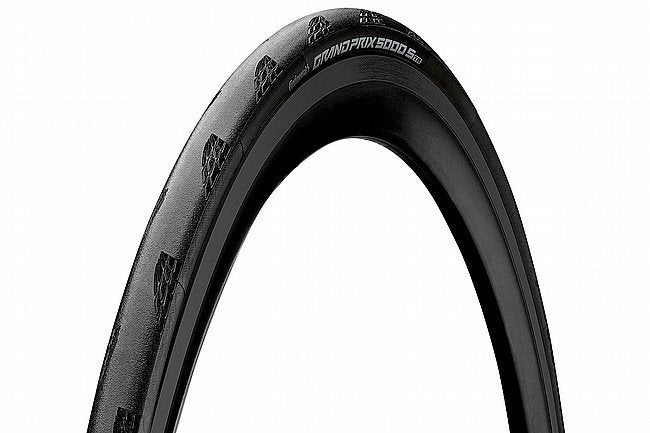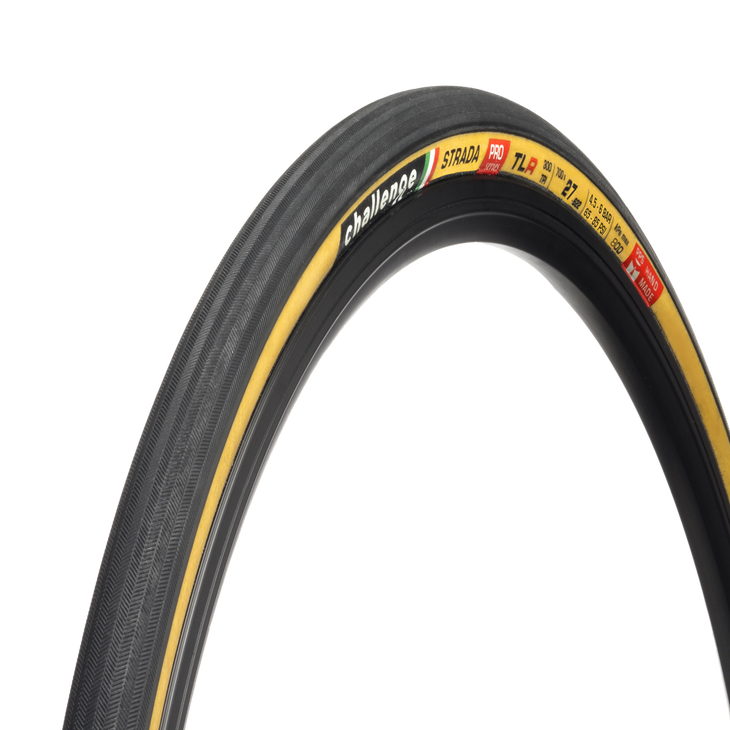[ad_1]
“], “filter”: { “nextExceptions”: “img, blockquote, div”, “nextContainsExceptions”: “img, blockquote”} }”>
Get access to everything we publish when you
>”,”name”:”in-content-cta”,”type”:”link”}}”>sign up for Outside+.
Triathletes are familiar with how much wind resistance costs in speed and energy, and it’s not only because you read and hear about it constantly. You can feel the difference when you go in or out of the aero position or get in or out of another rider’s draft. However, while you can feel large changes like that, it’s tougher to feel the difference in aerodynamic drag switching from one wheel to another or from one frame to another. A wind tunnel can help produce the data you need to figure it out, and sometimes you can even see the difference with a stopwatch or power meter, but it’s very unlikely you’ll be able to feel it.
Rolling resistance is a bit like that. You can feel the resistance difference between riding a knobby tire and a smooth one, or between riding a tire pumped up to 1 bar (14 psi) and 6 bar (87 psi). However, you won’t be able to feel the difference in rolling resistance when increasing tire pressure by half a bar (7 psi) or by changing your tire width by 2mm. The same goes for switching between tubulars, tubeless clinchers, and tube-type clinchers or between brands of high-end racing tires. However, like in the wind tunnel, a properly-designed lab test can reveal the difference, and it can be a lot.
If you ride with a power meter, you know that a 10-watt difference in power output is significant. That can be 3-5% of your average power in, say, an Ironman bike leg—which would make a substantial difference in time. It could mean a slot to Kona or watching from the couch in October. However, there is often that kind of difference in the amount of power it takes to roll a pair of properly-inflated racing tires of one brand, model, or type versus another on smooth pavement; the difference becomes even larger on rough roads.
When tested on a smooth lab drum, a tire’s rolling resistance will continue to decrease with increasing inflation pressure. A graph of tire pressure on the horizontal axis and rolling resistance on the vertical axis would show a line starting on the left at very high rolling resistance with very low tire pressure, trending downward to the right: higher tire pressure in this specific situation and conditions means lower rolling resistance. Some triathletes historically have believed in this ever-dropping graph to the point of choosing tires as narrow as 19mm pumped up to 180psi or more (using tubulars, in this example).

If a tire is super hard—imagine a bare rim rolling on glass—it can’t get traction. For the tire to grip, it must have a soft and sticky surface (a rubber compound). Rubber, however, heats up as it is squished and released. You can see what happens when dropping a solid rubber ball, like a lacrosse ball or a Superball. While those balls are extremely elastic and bounce very high on a sidewalk, each bounce is a little less high than the prior bounce. This lag in return is called “hysteresis” and is unavoidable in a tire; as it rolls, it will always lose some energy as heat due to hysteresis.
More traction requires a softer tread that has higher hysteresis loss than harder tread materials with lower rolling resistance. But not all tread compounds are created equally. Some rubber additives can provide more grip with less reduction in rolling friction than others. Recipes for what and how and when to mix additives with natural rubber into a tread compound are a tire company’s most closely-held secrets.
RELATED: Ask a Gear Guru: What Bike Tire Pressure Should I Run?
To absorb any imperfections in the road, the tire must have some give to it. The bumpier the surface, the more give that is required. Tires have compressed air inside their casing to provide that give, and the lower the air pressure inside or the higher the load on the tire, the more it will give. Analogous to the rubber tread, some energy is lost as heat when a section of tire casing rolls past the bottom (the road) and then returns to its prior shape in the next moment when it comes off the pavement.
If the air pressure and load is the same on two different wheels with tires of different size, the amount of surface area comprising the tire’s contact patch on the road will be the same, no matter the size of the tire. Thing is, a skinny tire will have to deflect more deeply at the bottom to flatten that same amount of area onto the road; its contact patch will be longer to comprise the same surface area as the fatter tire’s wider contact patch. The casing deflecting less deeply results in lower hysteresis loss in the fat tire.
RELATED: Why It’s Time to Look at Wide Wheels
A bike with super-hard tires feels lively and fast, bouncing along over the road surface—and, boy, did those 19mm tubulars pumped up over 180psi feel lively! But that bouncing is also energy lost from propulsion. If the tires are rock hard, the entire mass of the bike and of the rider will be fully deflected upward by each little imperfection in the road. Absorbing bumps in the body saps energy from the rider that could be used to propel the bike, resulting in early fatigue. And the energy to vertically lift the bike and the body is converted directly from energy that the rider and bike once had going forward only.
The trick to riding fast with minimal energy expenditure over bumpy surfaces is to have the bike and rider not move up and down as they roll along. If the tire’s air pressure is low enough and its size is large enough, a bump can be completely absorbed by the tire, so that the rim does not go up at all. The mass that goes up the height of the bump is only the little bit of the tire (and inner tube, if present) that deflects rolling over the bump. This is a lot less weight than the bike and rider, resulting in much less energy loss.
When going up and down with unabsorbed bumps, the rider’s body damps the vertical motion, and a properly-designed lab test of rolling resistance can simulate the energy lost in damping. The widespread adoption of compression clothing among triathletes shows a broad understanding of how vibration can bring on muscle fatigue.
Tires with more supple casings are faster than tires with stiffer casings, tubeless tires are generally faster than tube-type tires, and tubular tires, and latex or TPU inner tubes are faster than butyl ones. Look for tires with high thread counts in TPI (threads per inch), indicating that the casing threads are thinner and respond more easily to road imperfections. Select tires that are wider than you might think and run them at pressures lower than you might think. The rougher the course, the bigger the tire and the lower the pressure should be (yes, they will be faster, we promise!).
On, say, the Queen K highway, a 175-pound rider will want 25mm tires pumped to between 5 and 6 bar (72-87psi), or if the rims are wide enough that they perform well aerodynamically, even 28mm tires pumped to between 4.5 and 5.5 bar (65-80psi). The same 25mm tires for a 140-pound rider would be best at 4-5 bar (58-72 psi). If that surprises you, you’re probably not alone.
Aerodynamics is often called “free speed.” Relative to the high cost of aerodynamic equipment, however, buying faster tires, which wear out anyway and need to be replaced, is inexpensive speed. On a rough course, the difference in power to drive different pairs of expensive racing tires can be on the order of 30 watts. That’s worth paying attention to.
From many years of lab-testing and riding lots of tires, these are my favorites in this context of what will be fastest:
Specialized Turbo Cotton Clincher (with a latex or Schwalbe Aerothan TPU inner tube)
$80, specialized.com; $25, schwalbetires.com

This setup regularly outperforms all other tires in rolling resistance. Its 320 TPI casing of polyester/cotton threads not encased in rubber is super supple, its hand-glued-on Gripton tread compound is super fast, its BlackBelt puncture belt is very flexible, and the latex or TPU tube moves with less energy and resists punctures and pinch flats better than butyl tubes.
Continental Grand Prix 5000 S TR
$100, continental-tires.com

This tubeless-ready tire not only rolls fast, especially without a tube, but its slick, Black-Chili-compound tread with hatch-pattern shark-fin-shaped sections on the sides is also one of the fastest aerodynamically. Its casing is translucent, and while it has a low thread count, its threads are thin, supple, and super strong—woven with space between and held in a vulcanized rubber matrix.
Challenge Pro Strada TR

This handmade tubeless-ready tire is fast and comfortable. Its construction and thread count is almost identical to that of the Specialized Turbo Cotton clincher with a bead shape and layer of latex inside to make it hold air when run tubeless (with sealant).
[ad_2]
Source link

